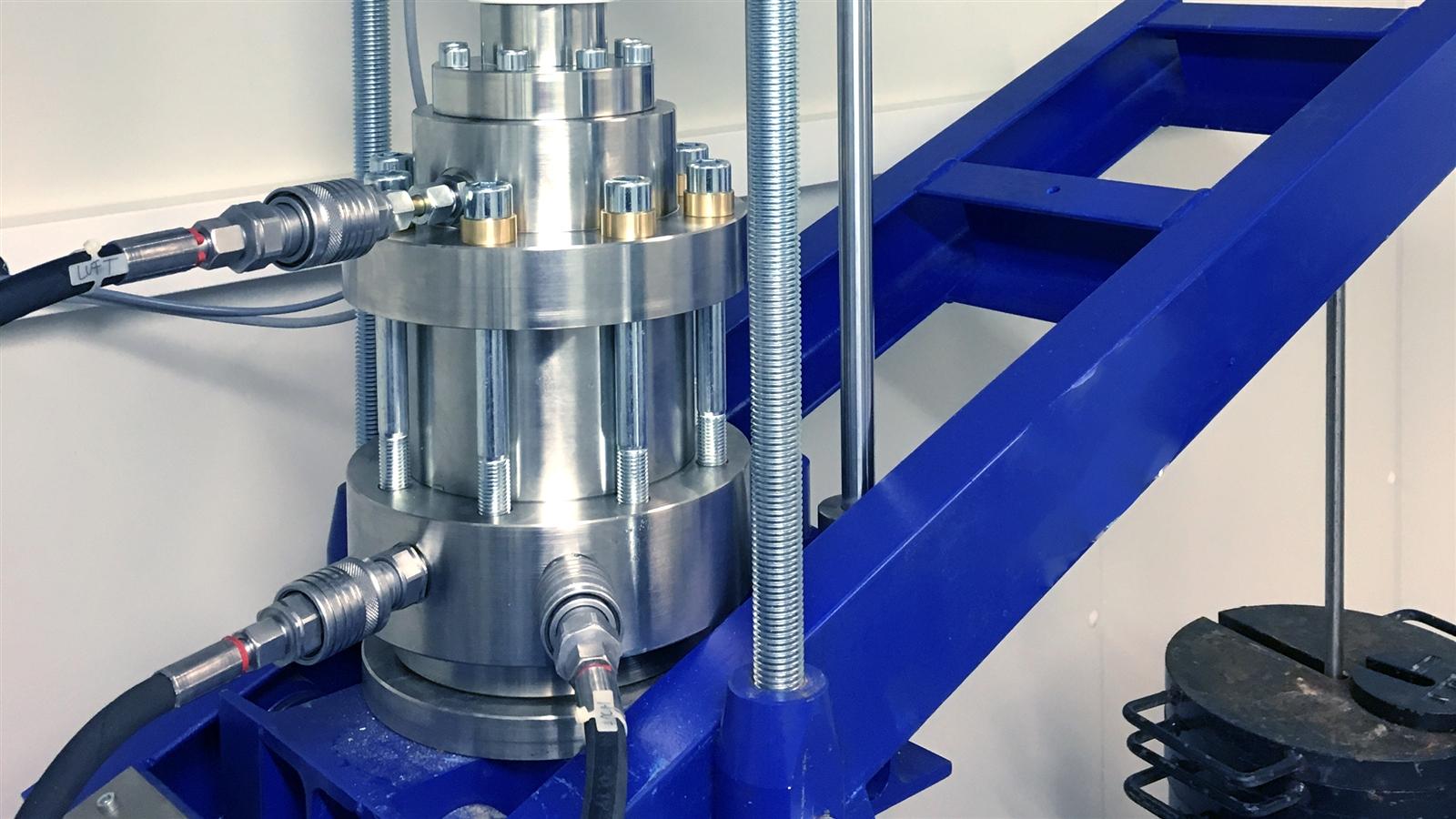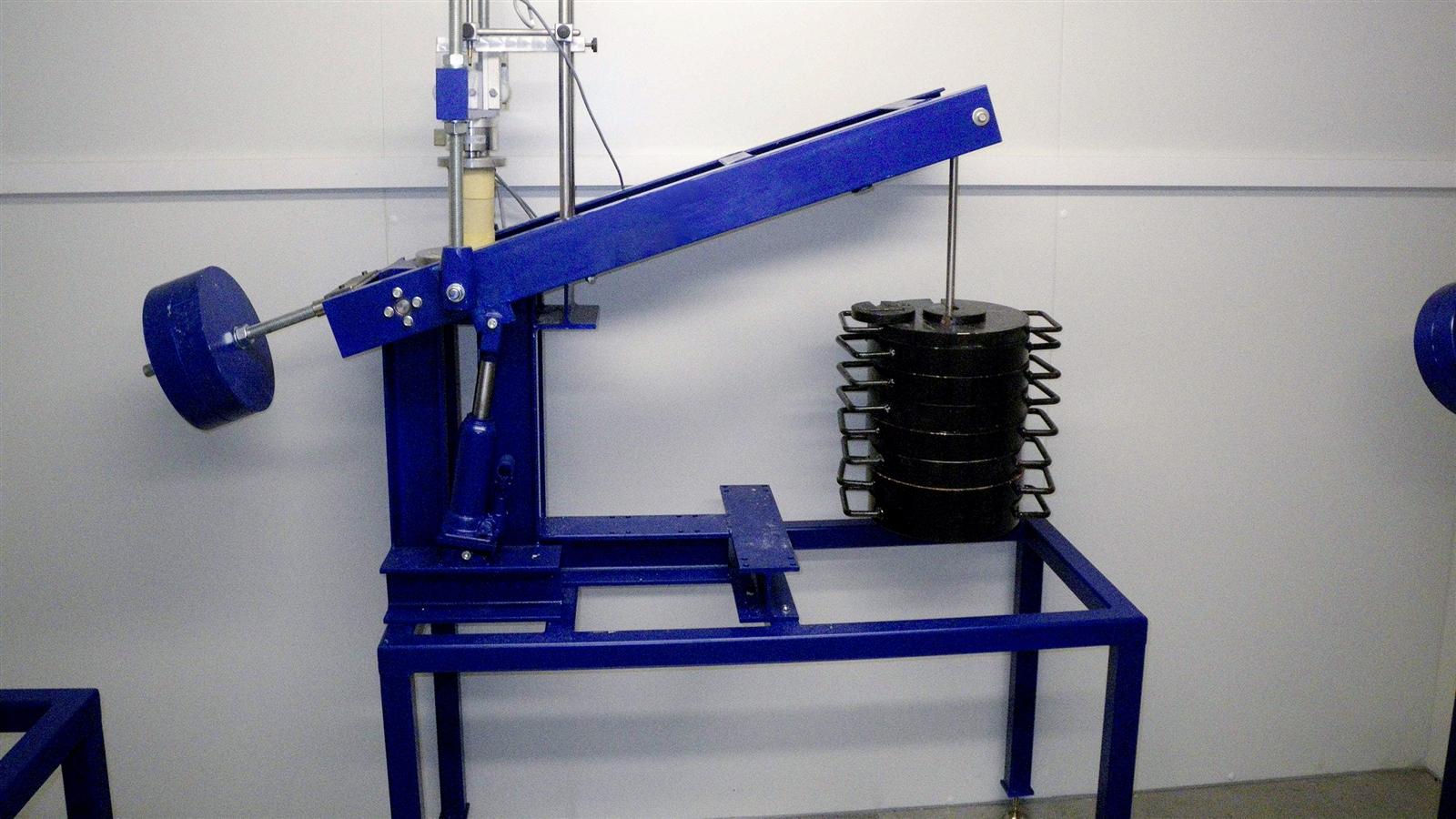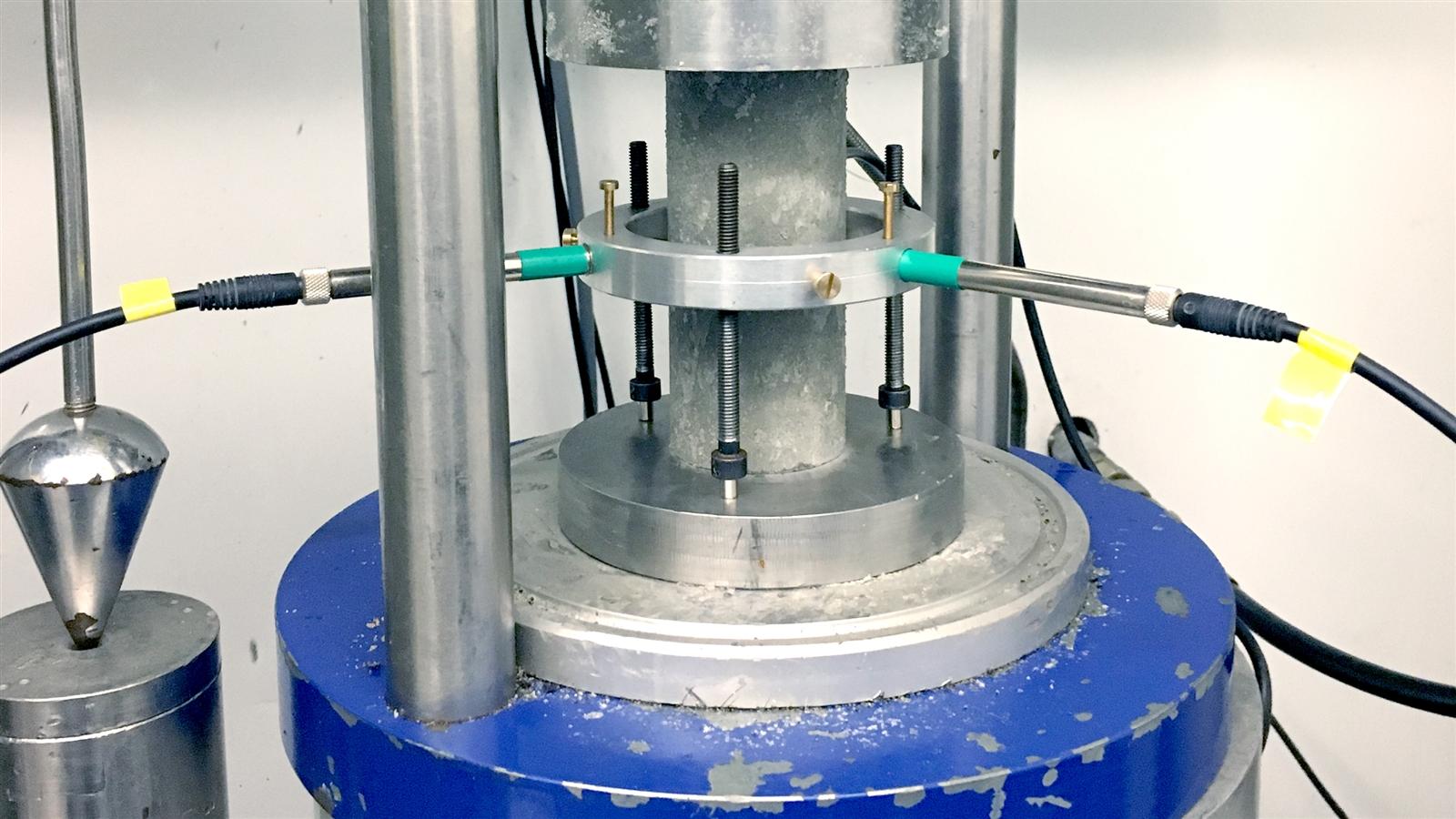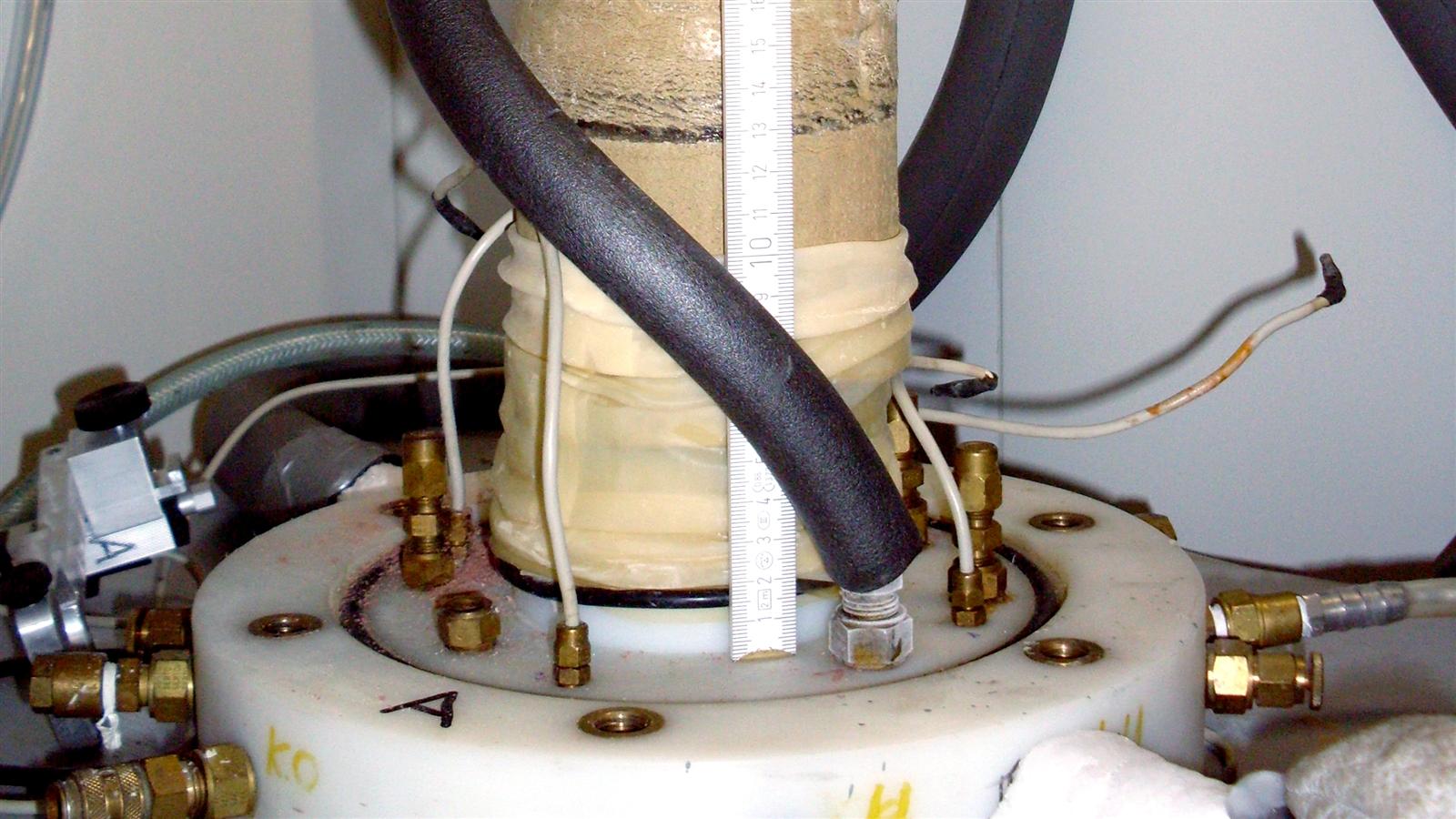Geotechnical laboratory: our ground freezing facility in Bochum
What defines a ground freezing lab?
Sebastian: Technically speaking, a ground freezing laboratory is a geotechnical facility. What makes it so special though is the operating temperature we work in – it gets as low as minus 25 degrees Celsius. Our Bochum lab features several walk-in climatic/cold chambers for us to conduct various investigations. Temperatures in those cold chambers usually are at -10 or -20 degrees Celsius, while the climate chambers provide +5 degrees Celsius.
What sort of investigations do you conduct in a ground freezing lab?
Sebastian: It‘s basically strength behaviour that is being analysed in that kind of lab. As with decreasing temperature or in frozen state physical characteristics of different soils vary according to their degree of saturation which also is decisive for the investigation results. Therefore, you need water within the soil itself as rock doesn’t freeze. So the water freezes, the soil’s strenght increases and water permeability decreases, and this way even sand can reach a stability comparable to that of concrete. We receive soil samples from all around the globe at our ground freezing facility, i.e. from Australia, Singapore, Canada, the US, Russia and Belgium. We actually investigated the soil underneath the Leaning Tower of Pisa as well. When taking a soil sample, metal or plastic sleeves are rammed into the ground. These sleeves then get sent to our lab in Bochum where they get frozen at -10 or -20 degrees Celsius in our climate chambers. Any construction progress is dependent on these results, e.g. calculating the frost body.
Can you name any example for the need of ground freezing?
Sebastian: Ground freezing is particularly used in tunneling. In order to freeze the ground, so-called freezing lances are driven into the ground which then get flushed with saline solution. These are frozen at -35 degrees Celsius and thereby freezing the ground around them. Another option would be using liquid nitrogen, providing an even greater stability, allowing for -196 degrees Celsius. Greater stability is required for example in case of existing buildings above the tunnel. So ground freezing allows for high stability of the ground whitout the need for concrete – providing the capability to withstand great compression caused by overlying buildings. For instance, we evaluate the required thickness of the frost body to withstand the existing compression.
Is there any special training/qualification that is needed to work in the ground freezing lab?
Sebastian: There is no single special training or qualification applicable to work in our ground freezing lab. Our staff consists of qualified Chemical-Technical Assistants, Physical-Technical Assitants as well as qualified Construction Material and/or Raw Material Examiners.
Our ground freezing facility in Bochum
What sort of tests do you conduct in the ground freezing lab?
Bialek: In case of a ground freezing assignment, we perform various investigations of the soil. In addition to special tests, we also evaluate the stability or deformation, e.g. by uniaxial and triaxial compression tests with the soil sample being clamped into a test compactor. This test compactor then pushes the soil sample against a traverse and crushes it, thereby assessing the soil’s stability. Furthermore, we also conduct so-called creep tests with the sample also clamped in and then exposed to a static load, remaining under this load for several days. These tests determine occuring deformation caused by load. As mentioned above we also do special tests, such as frost heave tests or freezing pressure tests.
However, those frost heave tests are not done at temperatures below freezing point but at +5 degrees Celsius. The soil sample is put onto a stand which is warmed to +5 degrees Celsius. The sample is then covered by a cap the size of the sample with the sample then being cooled. This way, the soil sample gets frozen top to bottom like for example tarmac on the streets would - with the top being frozen and the base not frozen causing so-called frost lenses in the middle layer. These frost lenses then expand causing for the top layer to heave or burst. So in our lab we measure the degree of heaving. If the ground is unable to heave as it does in this simulation what happens is called freezing or frost pressure. So, the test simulates the ground’s expansion caused by freezing and it’s behaviour when pushed against something. Out in the field this could possibly be groundworks, a baseplate, or tunnel facing. This test is vital for the construction progress as frost damage can cause major destruction.
What makes the ground freezing lab so unique?
Bialek: Ground freezing is our USP (Unique Selling Proposition). We have been specialized in ground freezing for over 30 years now, evaluating samples from all over the world. With us, our clients get the one-stop solution with our expertise based on longtime experience.

Working in the icing lab is very diverse, because we supervise many international projects.









